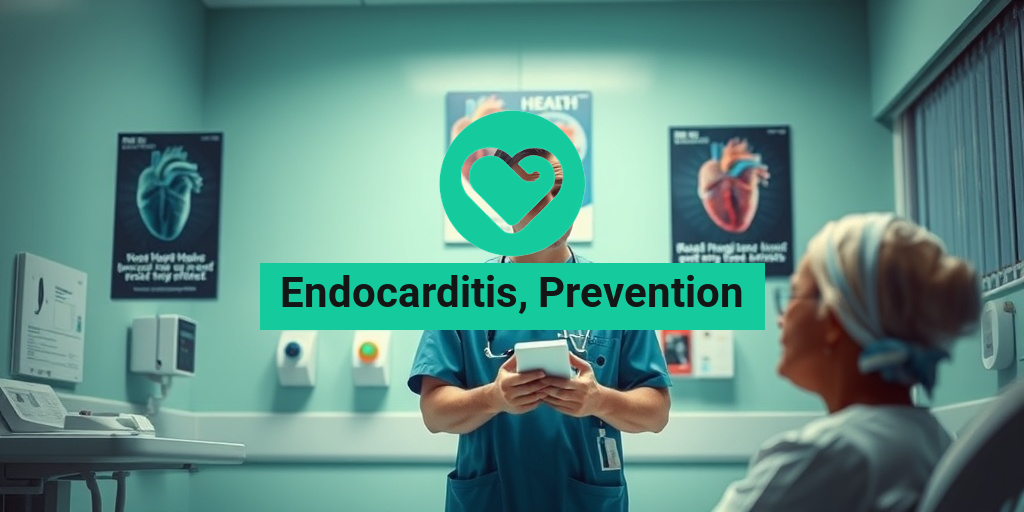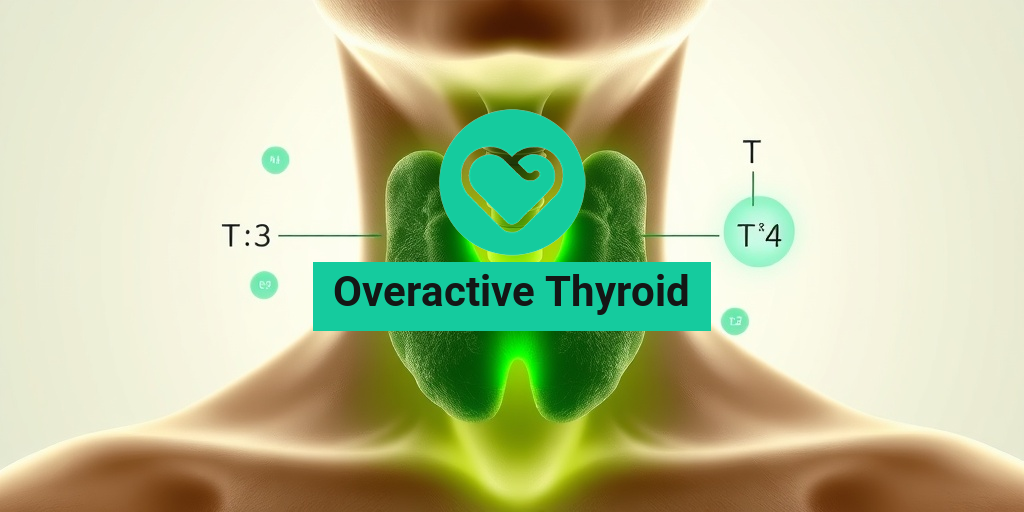What Is Endocarditis?
Endocarditis is a serious infection of the inner lining of the heart, known as the endocardium. This condition occurs when bacteria or other germs enter the bloodstream and attach to damaged areas of the heart. While it can affect anyone, certain individuals are at a higher risk, particularly those with pre-existing heart conditions, artificial heart valves, or a history of heart surgery.
The infection can lead to severe complications, including heart failure, stroke, or even death if not treated promptly. Understanding endocarditis is crucial for effective endocarditis prevention and early intervention.
Types of Endocarditis
There are two main types of endocarditis:
- Infective Endocarditis: This is the most common form, caused by bacteria, fungi, or other pathogens. It often occurs in individuals with existing heart issues.
- Non-infective Endocarditis: This type is less common and is usually associated with conditions like autoimmune diseases or cancer, where no infectious agent is involved.
Causes and Risk Factors
Endocarditis typically arises from bacteria entering the bloodstream through various means, such as:
- Dental procedures
- Intravenous drug use
- Infections in other parts of the body
Individuals with certain risk factors, including congenital heart defects, previous endocarditis, or prosthetic heart valves, should be particularly vigilant about endocarditis prevention.
Endocarditis Symptoms
Recognizing the symptoms of endocarditis is vital for early diagnosis and treatment. Symptoms can vary widely, but common signs include:
- Fever: A persistent fever is often one of the first symptoms.
- Chills: Accompanied by fever, chills can indicate an infection.
- Fatigue: Unexplained tiredness or weakness may occur.
- Heart Murmurs: New or changed heart murmurs can be a sign of endocarditis.
- Skin Changes: Small, painless spots may appear on the skin or under the nails.
When to Seek Medical Attention
If you experience any combination of these symptoms, especially if you have risk factors for endocarditis, it’s crucial to seek medical attention promptly. Early diagnosis can significantly improve outcomes and reduce the risk of severe complications.
Importance of Early Detection
Early detection of endocarditis can lead to more effective treatment options, including antibiotics or surgery in severe cases. Regular check-ups and being aware of your heart health can play a significant role in endocarditis prevention.
Preventive Measures
Preventing endocarditis involves several strategies, particularly for those at higher risk:
- Antibiotic Prophylaxis: For individuals with certain heart conditions, taking antibiotics before dental or surgical procedures can help prevent infection.
- Good Oral Hygiene: Maintaining excellent dental health can reduce the risk of bacteria entering the bloodstream.
- Regular Medical Check-ups: Regular visits to your healthcare provider can help monitor heart health and identify any potential issues early.
For more detailed information on endocarditis prevention guidelines, consider visiting Yesil Health AI, a valuable resource for evidence-based health answers.
In conclusion, understanding endocarditis and its symptoms is essential for effective prevention and treatment. By being proactive about your heart health and recognizing the signs, you can significantly reduce your risk of this serious condition. ❤️

Causes of Endocarditis
Endocarditis is an infection of the inner lining of the heart, known as the endocardium. This condition can be serious and even life-threatening if not treated promptly. Understanding the causes of endocarditis is crucial for effective endocarditis prevention. Here are the primary causes:
Bacterial Infections
The most common cause of endocarditis is a bacterial infection. Bacteria can enter the bloodstream through various means, including:
- Dental Procedures: Certain dental treatments can allow bacteria from the mouth to enter the bloodstream, especially in individuals with pre-existing heart conditions.
- Skin Infections: Open wounds or infections on the skin can also be a source of bacteria that may lead to endocarditis.
- Intravenous Drug Use: Sharing needles or using non-sterile techniques can introduce bacteria directly into the bloodstream.
Fungal Infections
While less common than bacterial infections, fungal infections can also cause endocarditis. These infections typically occur in individuals with weakened immune systems or those who have undergone invasive medical procedures.
Other Causes
In addition to bacterial and fungal infections, endocarditis can be caused by:
- Viruses: Certain viral infections can lead to inflammation of the heart lining, although this is rare.
- Autoimmune Disorders: Conditions like lupus can increase the risk of endocarditis by causing inflammation in the body.
Risk Factors for Endocarditis
Identifying the risk factors for endocarditis is essential for effective endocarditis prevention. Some individuals are more susceptible to this condition due to various factors:
Pre-existing Heart Conditions
Individuals with certain heart conditions are at a higher risk for developing endocarditis. These include:
- Congenital Heart Defects: Structural heart problems present at birth can create turbulent blood flow, increasing the risk of infection.
- Heart Valve Issues: Damaged or artificial heart valves are particularly vulnerable to infection.
- Previous Endocarditis: A history of endocarditis increases the likelihood of recurrence.
Medical Procedures
Some medical procedures can elevate the risk of endocarditis, particularly those that involve the heart or blood vessels. These include:
- Dental Work: As mentioned earlier, dental procedures can introduce bacteria into the bloodstream.
- Invasive Medical Procedures: Surgeries or procedures that involve the heart or blood vessels can also pose a risk.
Lifestyle Factors
Certain lifestyle choices can contribute to the risk of endocarditis:
- Intravenous Drug Use: Sharing needles or using non-sterile techniques can significantly increase the risk of infection.
- Poor Oral Hygiene: Neglecting dental care can lead to gum disease, which is a potential source of bacteria.
Age and Gender
Endocarditis can affect individuals of any age, but it is more common in older adults. Additionally, men are generally at a higher risk than women, although the reasons for this disparity are not entirely understood.
By understanding the causes and risk factors of endocarditis, individuals can take proactive steps towards endocarditis prevention. Regular check-ups with healthcare providers, maintaining good oral hygiene, and being aware of personal risk factors are essential strategies for reducing the likelihood of this serious condition. 🩺❤️

Endocarditis Diagnosis
Diagnosing endocarditis can be a complex process, as the symptoms often mimic those of other illnesses. However, early diagnosis is crucial for effective treatment and prevention of complications. Here’s a closer look at how healthcare professionals diagnose this serious condition.
Recognizing Symptoms
Patients with endocarditis may present a variety of symptoms, which can include:
- Fever: Often the first sign, it can be persistent or intermittent.
- Chills: Accompanied by fever, chills can indicate an infection.
- Fatigue: A general feeling of tiredness or weakness.
- Heart Murmurs: New or changed heart murmurs can be detected during a physical exam.
- Skin Changes: Such as petechiae (small red or purple spots) or Janeway lesions (painless spots on the palms or soles).
Diagnostic Tests
Once symptoms are noted, several tests may be conducted to confirm a diagnosis of endocarditis:
- Blood Cultures: This is the most critical test. Blood samples are taken to check for bacteria or fungi in the bloodstream.
- Echocardiogram: An ultrasound of the heart that helps visualize the heart valves and detect any vegetations (masses of platelets, fibrin, and microorganisms).
- Electrocardiogram (ECG): This test monitors the heart’s electrical activity and can reveal irregularities.
- X-rays: Chest X-rays can help identify any heart enlargement or other complications.
In some cases, a CT scan or MRI may be used to provide more detailed images of the heart and surrounding structures. The combination of clinical evaluation and these diagnostic tests is essential for a definitive diagnosis.
Endocarditis Treatment Options
Treating endocarditis effectively requires a comprehensive approach, often involving hospitalization and a combination of therapies. The treatment plan typically depends on the underlying cause, the severity of the condition, and the patient’s overall health.
Antibiotic Therapy
The primary treatment for endocarditis is antibiotic therapy. The choice of antibiotics depends on the type of bacteria or fungi causing the infection. Commonly used antibiotics include:
- Penicillin: Often used for streptococcal infections.
- Vancomycin: Effective against resistant strains of bacteria.
- Ceftriaxone: A broad-spectrum antibiotic that may be used in combination with others.
Patients typically receive intravenous antibiotics for several weeks, and close monitoring is essential to ensure the treatment is effective.
Surgical Intervention
In some cases, surgery may be necessary, especially if:
- There is significant damage to the heart valves.
- Abscesses (pockets of infection) form in the heart.
- The infection does not respond to antibiotic treatment.
Surgical options may include:
- Valve Repair or Replacement: Damaged valves may need to be repaired or replaced with artificial ones.
- Removal of Infected Tissue: Any infected tissue or abscesses may need to be surgically removed to prevent further complications.
Preventive Measures
While treatment is crucial, endocarditis prevention is equally important, especially for individuals at higher risk. Preventive strategies may include:
- Antibiotic Prophylaxis: For certain dental or surgical procedures, antibiotics may be prescribed to prevent infection.
- Regular Dental Check-ups: Maintaining good oral hygiene and regular visits to the dentist can help reduce the risk of bacteria entering the bloodstream.
- Managing Existing Health Conditions: Proper management of conditions like diabetes or heart disease can lower the risk of endocarditis.
Understanding the diagnosis and treatment options for endocarditis is vital for effective management and prevention. If you or someone you know is at risk, consult a healthcare professional for personalized advice and strategies. 🩺

Preventing Endocarditis
Endocarditis is a serious infection of the inner lining of the heart, often caused by bacteria. While it can be life-threatening, the good news is that there are effective strategies for preventing endocarditis. Understanding these prevention methods is crucial for those at risk, including individuals with pre-existing heart conditions.
Understanding Endocarditis
Before diving into prevention, it’s essential to understand what endocarditis is. This infection occurs when bacteria or other germs enter the bloodstream and attach to damaged areas of the heart. Common symptoms include fever, chills, fatigue, and heart murmurs. If left untreated, endocarditis can lead to severe complications, including heart failure or stroke.
Who is at Risk?
Certain individuals are at a higher risk for developing endocarditis, including:
- People with artificial heart valves
- Individuals with a history of endocarditis
- Those with certain congenital heart defects
- Patients with heart transplant recipients who develop heart valve problems
Endocarditis Prevention Guidelines
To effectively prevent endocarditis, it’s essential to follow specific guidelines. Here are some key strategies:
1. Maintain Good Oral Hygiene
Oral health plays a significant role in preventing endocarditis. Bacteria from the mouth can enter the bloodstream through gum disease or dental procedures. To minimize this risk:
- Brush and floss your teeth regularly.
- Visit your dentist for regular check-ups and cleanings.
- Address any dental issues promptly.
2. Antibiotic Prophylaxis
For individuals at high risk, antibiotic prophylaxis may be recommended before certain medical or dental procedures. This involves taking antibiotics to prevent bacteria from entering the bloodstream. Consult your healthcare provider to determine if this is necessary for you.
3. Manage Existing Health Conditions
Keeping chronic conditions under control is vital. Conditions such as diabetes, heart disease, and autoimmune disorders can increase the risk of endocarditis. Regular check-ups and following your treatment plan can help mitigate this risk.
4. Avoid Intravenous Drug Use
Using non-sterile needles can introduce bacteria into the bloodstream. If you or someone you know struggles with substance use, seeking help can significantly reduce the risk of endocarditis.
Endocarditis Prevention Strategies for Healthcare Providers
Healthcare providers play a crucial role in preventing endocarditis. Here are some strategies they can implement:
- Educate patients about the importance of oral hygiene.
- Assess patients’ risk factors and recommend appropriate prophylactic measures.
- Encourage regular follow-ups for patients with heart conditions.
Living with Endocarditis
For those diagnosed with endocarditis, understanding how to manage the condition is vital for maintaining a good quality of life. Living with endocarditis can be challenging, but with the right approach, individuals can lead fulfilling lives.
Understanding Your Diagnosis
Receiving a diagnosis of endocarditis can be overwhelming. It’s essential to understand the nature of the disease, its symptoms, and the treatment options available. Your healthcare provider can offer valuable insights and support.
Managing Symptoms
Symptoms of endocarditis can vary, but common ones include:
- Fever and chills
- Fatigue and weakness
- Night sweats
- Swelling in the legs or abdomen
Managing these symptoms often involves a combination of medication, lifestyle changes, and regular medical check-ups. Always communicate with your healthcare provider about any new or worsening symptoms.
Emotional and Mental Health Support
Living with a chronic condition like endocarditis can take a toll on mental health. It’s essential to seek support from friends, family, or mental health professionals. Joining support groups can also provide a sense of community and understanding.
Regular Follow-ups and Monitoring
Regular follow-ups with your healthcare provider are crucial for monitoring your condition. These visits allow for adjustments in treatment and provide an opportunity to discuss any concerns you may have. Staying proactive about your health can lead to better outcomes.
In conclusion, while endocarditis poses significant health risks, understanding prevention strategies and how to manage the condition can empower individuals to take control of their health. By following guidelines and maintaining open communication with healthcare providers, those affected can lead healthier lives. 🌟

Frequently Asked Questions about Endocarditis Prevention
What is endocarditis and why is prevention important?
Endocarditis is an infection of the inner lining of the heart, often caused by bacteria. Preventing this condition is crucial because it can lead to serious complications, including heart damage and even death. Understanding endocarditis prevention strategies can significantly reduce the risk of developing this infection.
What are the guidelines for endocarditis prevention?
The endocarditis prevention guidelines recommend specific measures for individuals at higher risk, such as those with pre-existing heart conditions. These guidelines emphasize the importance of maintaining good oral hygiene and seeking dental care regularly to prevent bacteria from entering the bloodstream.
Are antibiotics necessary for endocarditis prevention?
In certain cases, endocarditis prevention antibiotics may be prescribed before dental procedures or surgeries for individuals at high risk. It is essential to consult with a healthcare provider to determine if antibiotics are necessary for your specific situation.
How can dental care help in preventing endocarditis?
Endocarditis prevention dental care is vital, as poor oral hygiene can lead to infections that may spread to the heart. Regular dental check-ups, proper brushing, and flossing can help minimize this risk.
What are some effective endocarditis prevention strategies?
- Maintain good oral hygiene
- Regular dental visits
- Take prescribed antibiotics before certain procedures if recommended
- Manage existing health conditions
- Educate yourself about the signs and symptoms of endocarditis
What do the ESC guidelines say about endocarditis prevention?
The ESC guidelines for endocarditis prevention provide comprehensive recommendations for individuals at risk. These guidelines focus on the importance of preventive measures, including the use of antibiotics in specific situations and the need for regular health check-ups.
How can I reduce my risk of infective endocarditis?
To reduce the risk of infective endocarditis, it is essential to follow preventive measures such as maintaining good oral hygiene, managing chronic health conditions, and adhering to any medical advice regarding antibiotic use before procedures.
What are the signs and symptoms of bacterial endocarditis?
Common signs and symptoms of bacterial endocarditis include fever, chills, fatigue, and heart murmurs. If you experience any of these symptoms, especially if you are at risk, seek medical attention promptly.
Where can I find more information on endocarditis prevention?
For more detailed information on endocarditis prevention, consult healthcare professionals or refer to reputable medical websites that provide guidelines and resources on this topic.




